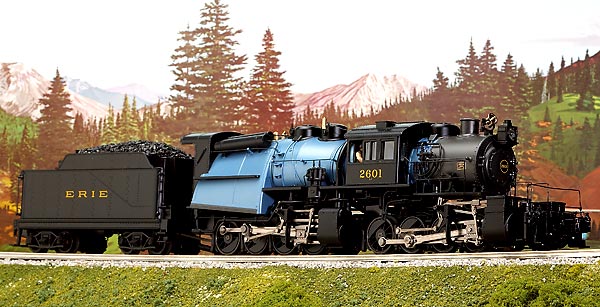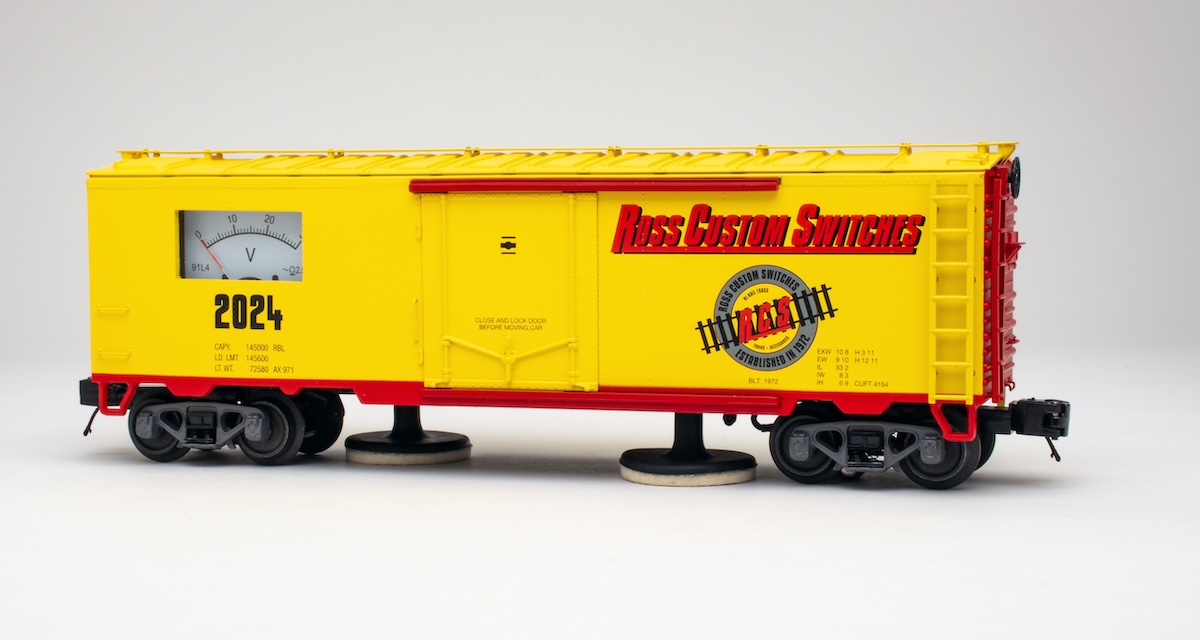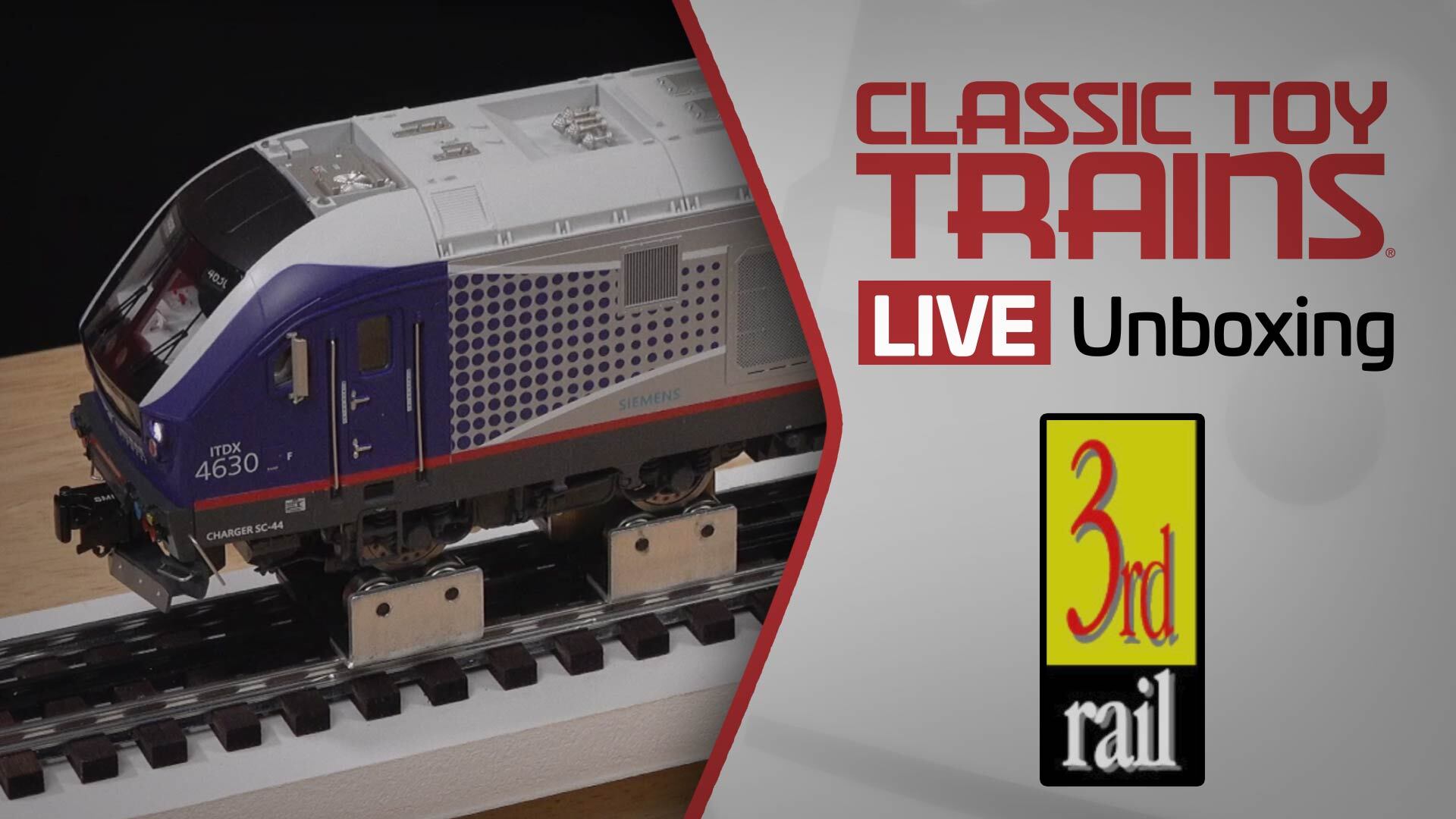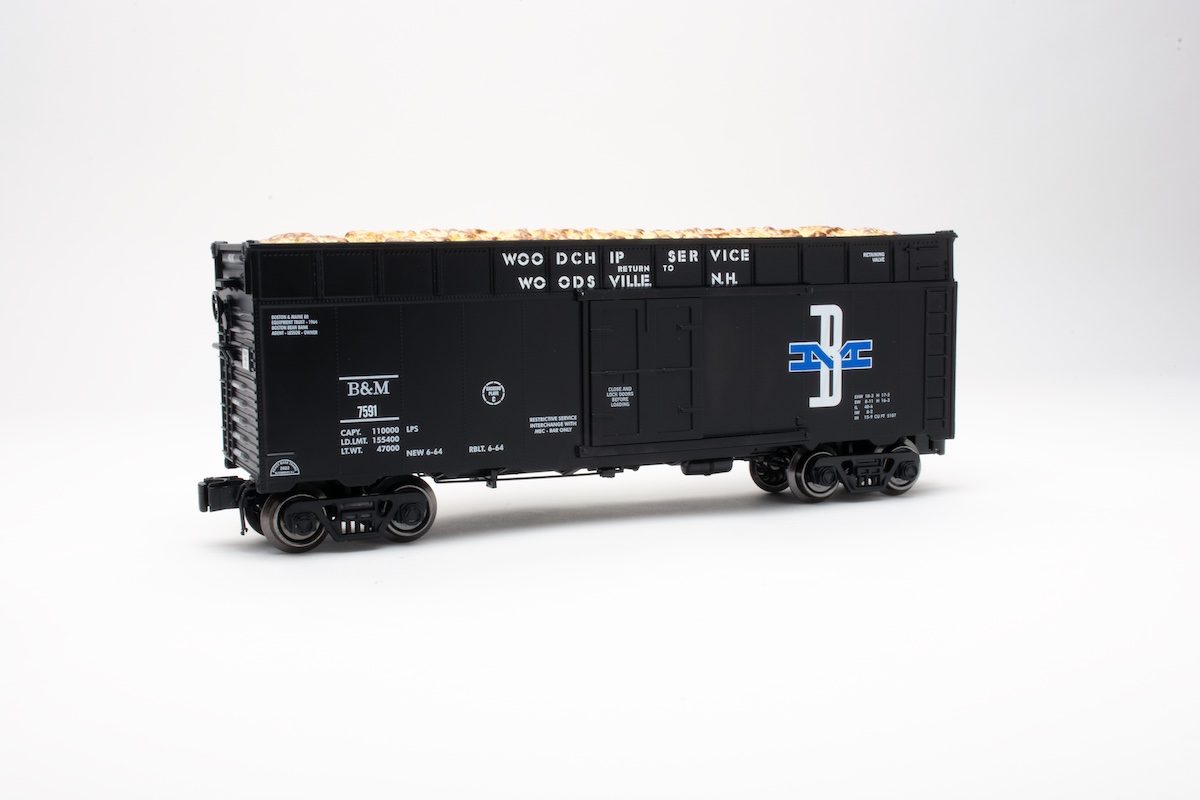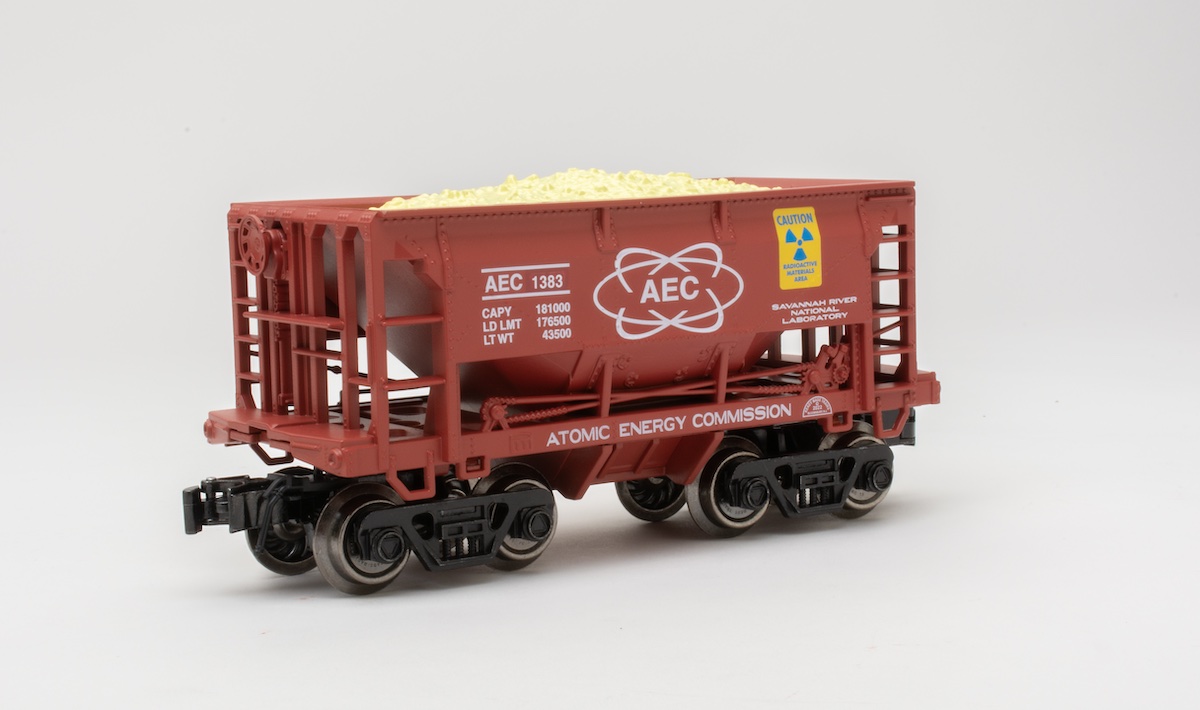The precarious Camelback design, with an engineer seated astride the boiler and the fireman bringing up the rear, was reported to be nearly unbearable for crews in 4-4-2 or 4-6-2 wheel arrangements. But can you imagine how bad it would have been to running on one of these 0-8-8-0 monsters on a blazing summer day?
Like many Eastern railroads, the Erie had a problem with heavy freights and Appalachian mountain grades. In an effort to reduce operating costs, the railroad thought a locomotive like an 0-8-8-0 could replace two conventional steamers.
Alco delivered the three L1-class engines (nos. 2600-2602) to the Erie in 1907. The L1s were the railroad’s first Mallet-type locomotives.
At the time, they were the heaviest locomotives ever built, weighing in at 409,000 pounds each.
Generating 94,000 pounds of tractive effort, they were designed to move freight as helpers, and spent most of their time on Susquehanna Hill or Gulf Summit Grade.
The three Mallets, with the nickname “Angus,” replaced nine 2-8-0 Consolidations and 2-10-0 Decapods in pusher service. They were cost effective, averaging, according to one study, only 12.3 cents a mile.
The locomotives did well, and in 1921 Baldwin rebuilt the three locomotives, moving the center cab to the rear. Baldwin also added leading and trailing trucks, converting the trio into 2-8-8-2s.
The model
This is a pretty cool-looking scale-sized locomotive. It looks as large and bulky as any O gauge engine I’ve seen. On first glance, it looks like it would give a Union Pacific Big Boy a run for the money in a head-to-head drawbar-pull test.
The pilot looks big enough to nestle a 1:43 scale model of a Chevy Suburban! The steam chests capture the heavy-duty look of the prototype. The pilot features an operating coil coupler (not a dummy!), an uncoupler bar, some great handrails, and, interestingly, marker lights. Remember, the prototype of this engine was a pusher, so brakemen would be riding on the front, ready to hop off to coupler cars and air-brake lines to the locomotive.
The forward-biased cab makes the smokebox look short, almost stubby, even when compared to other Camelbacks. You’ll find some neat pipe detail on the sides of the smokebox. On the face of the boiler are grab irons, a number plate, and a lantern headlight with illuminated engine numbers. This last detail adds a funky, 19th-century appearance to the locomotive. Builder’s plates adorn the body as well.
A gold-tone bell is between the smokestack and the headlight, and there’s a dome between the stack and the cab. Two more domes, a whistle, pop-off valves, and four “torpedo-tube” tanks round off the topside features.
The cab contains an engineer figure, illumination, and, as the photos reveal, interior equipment like a throttle. The rivet detail on both the cab and the fireman’s weather overhang at the end of the locomotive are well executed.
The extra-wide Wooten firebox, which necessitates the Camelback cab design, looks like it’s been downing some Olympic-sized steroids! Its size and shape look wild when compared with Pennsylvania Railroad or Reading engines with similar (if somewhat smaller-capacity) Wooten designs. Looking at the steamer on level track, the massive firebox looks like some sort of jacked-up monster truck.
The locomotive’s backhead is outstanding. As the photo shows, there is plenty of cast-in detail, such as pipes and gauges. The gauges have white-painted faces. The photo below and to the left captures the faint glow in the firebox. Look closely and you’ll also see a tiny light to illuminate the fireman’s step.
The side rods, without a bright shine, remain eye-catching when the engine is under way.
By now, you’ve surely noticed the locomotive’s rather unusual color. Is this the Erie’s answer to the Blue Comet?
We asked MTH and were told that the Erie Triplex locomotive (its review starts on page 107) had a boiler made of what was called Russian Iron. This metal reportedly has a blue finish.
By extension, MTH made the boiler of the Erie’s Angus the same silver-blue color largely because it looked attractive.
“Nobody’s ever shown me proof that the 0-8-8-0 was blue,” said Andy Edleman, MTH’s vice president of marketing. But, by the same token, he noted, in an era of black-and-white photography, nobody has proven it wasn’t blue.
Regardless of the unconventional coloring, application of paint is excellent. The blue firebox and boiler are a welcome contrast to the black cab, smokebox, and tender.
Lettering was skillfully applied. And the white gauges (with indicator needles) and red valve handles are cleanly painted.
On the test track
The Angus delivered good performance on the test track. Its low-speed average in conventional-control mode was 3.94 scale mph.
The high-speed average is, in toy train terms, a mere 50.9 scale mph. Running in MTH’s Digital Command System mode, we recorded a low-speed average of 2.03 scale mph.
Drawbar pull for the 10-pound, 131/2-ounce locomotive was a robust 3 pounds, 11 ounces, which will probably ensure that any freight you run can now be easily shoved up your toughest grade.
Our sample locomotive exhibited a hitching motion when operating at its slowest speeds. It appeared as though, during each rotation of the wheels, the drive mechanism encountered some resistance (like a piece of flash) and then overcame it as the speed-control circuit applied a bit more juice. After quite a bit of running, you could almost detect a rhythm to it. As far as our sample goes, this was confined to the “10 scale mph or below” realm.
The sound package was excellent, and the DCS functions all performed well, although a few times I had to hit the reverse button more than once.
The Premier line Erie 0-8-8-0 looks fantastic and delivers good performance. If you’re tired of Plain Jane black steamers on your main line, take a gander at the blue Angus!





